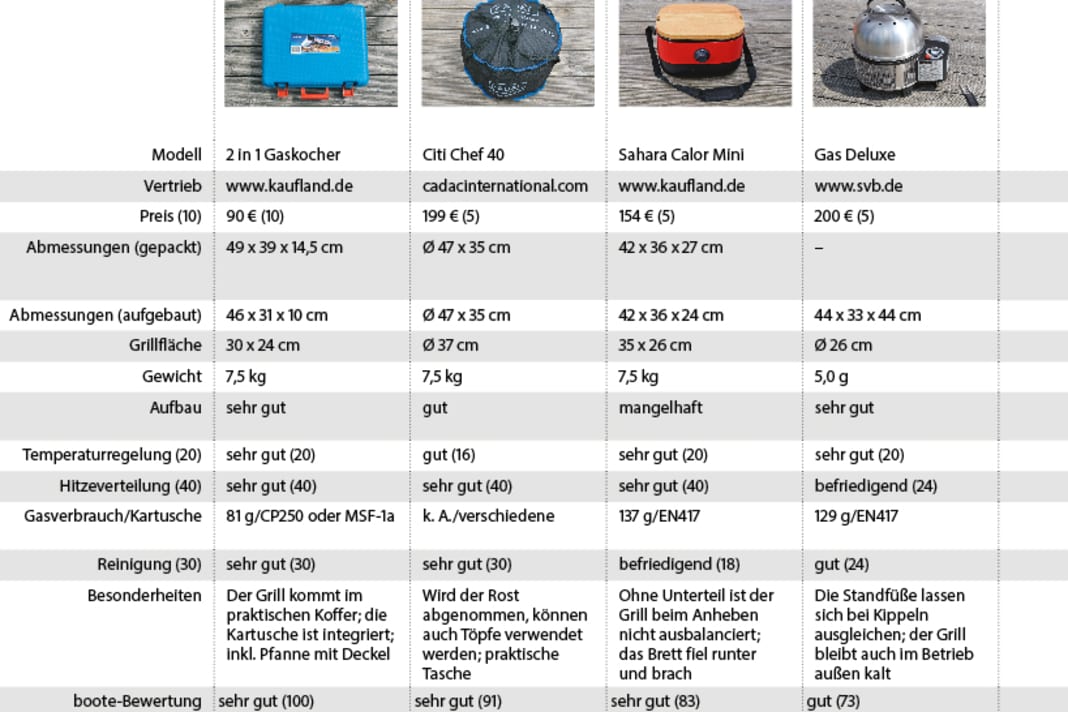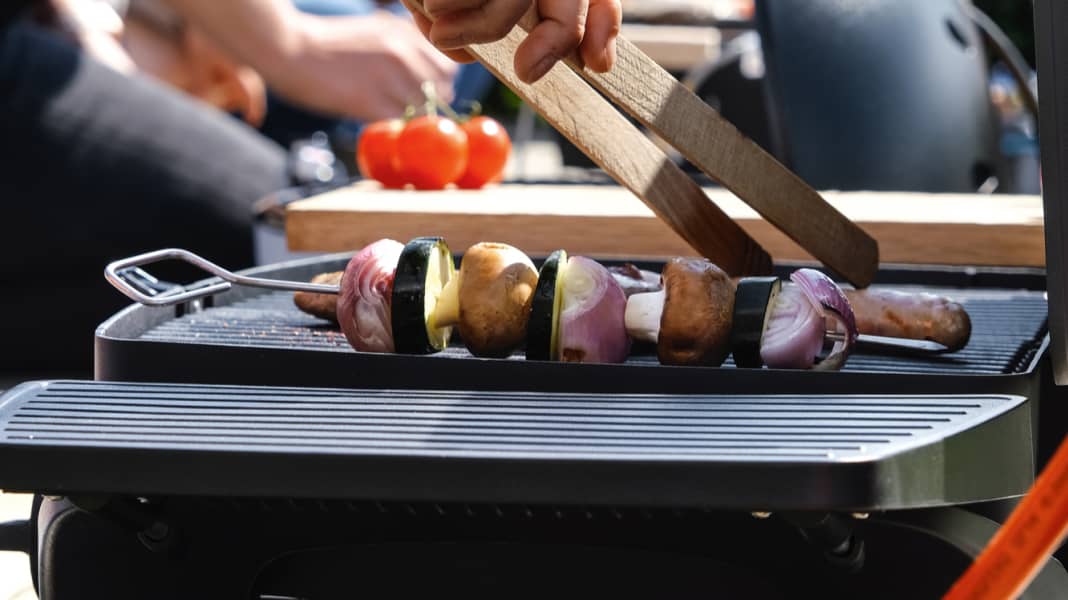
After a successful boat trip on a summer evening, there is hardly anything better than barbecuing on the marina barbecue area or on the jetty - except perhaps preparing meat and vegetables on the barbecue directly on board. Plates, cutlery and many other things don't have to be brought ashore. And washing up is also easier. Using gas instead of charcoal is also no problem on board: the gas burners do not spread smoke and radiate the heat upwards. This keeps the grill cool underneath and there are no glowing coals to dispose of after the fun. Gas barbecues are also becoming increasingly popular with motor boaters. We therefore test ten current models of this type for their practicality.
In this article:
This is how we tested
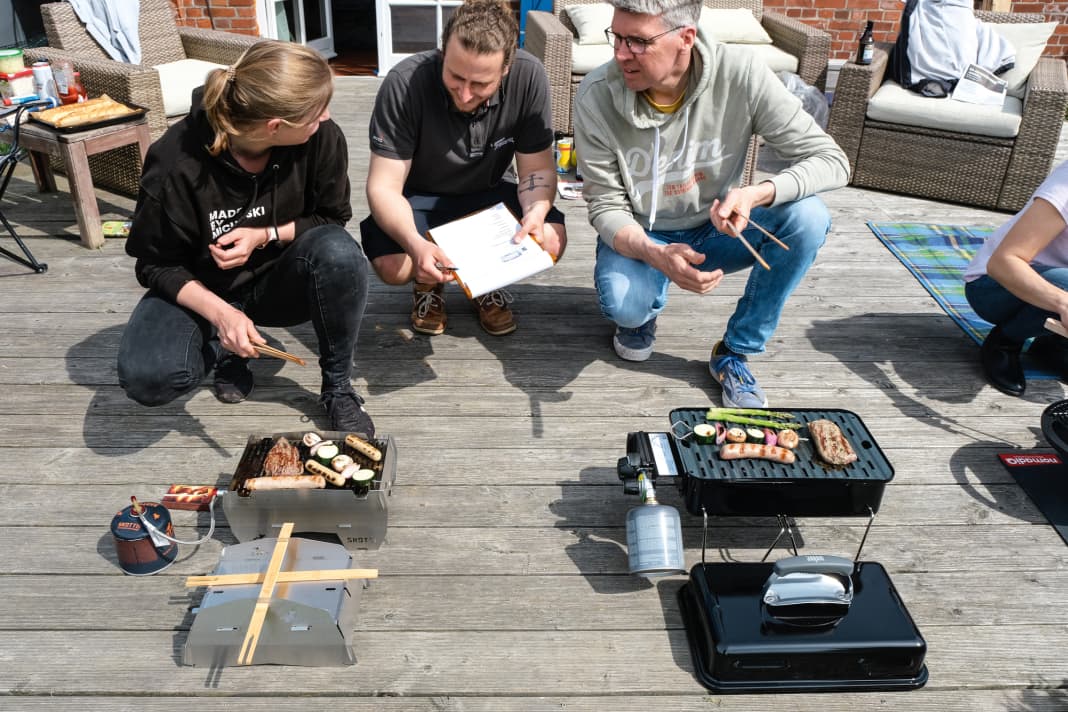


The gas barbecues were measured and weighed (including the full gas cartridge), then it was time for the practical test: All appliances were switched on and preheated for three minutes at the highest level. The food was then placed on the grill. To make the results comparable, we placed meat, sausages and vegetables on each grill. The latter had the longest cooking time on the grill and needed a lot of attention. Sausages and steaks are ready much faster than mushrooms, courgettes, etc. Grills that got particularly hot had to be turned down, so the gas consumption calculated by reweighing the cartridge is only comparable to a limited extent, but it does provide an indication. All gas barbecues were in operation for 25 minutes. The models were then cleaned. This revealed major differences, which were also included in the assessment.
10 gas barbecues for on-board use in the test:
- Alpen Camping 2 in 1 gas cooker >> available here
- Cadac Citi Chef 40 >> available here
- Sahara Calor Mini
- Cobb Gas Deluxe >> available here
- Enders Urban Pro >> available here
- Knister gas grill
- Magma gas barbecue >> available here
- Nomadiq BBQ >> available here
- Skotti Grill >> available here
- Weber Go-Anywhere >> available here
Hot irons
The barbecues can be divided into three groups: those with a small pack size, the large models and those for the railing, which can remain there even when not in use. The models with a small pack size include the 2-in-1 Alpencamping gas cooker from Kaufland, the Knister barbecue, the Nomadiq BBQ and, above all, the innovative Skotti. It can be completely dismantled and packed up spectacularly small. The Nomadiq barbecue offers the largest grill for its good packing size. The larger models are the Citi Chef 40 from Cadac, the Sahara Calor Mini from Kaufland, the Gas Deluxe from Cobb, the Go-Anywhere from Weber and the Urban Pro from Enders. The latter stands out from the test field due to its size and should only be purchased if there is enough free space in the baking box. In return, it offers a large grill grate and even a work surface. The Magma gas barbecue does not need to be stowed away, it can remain on the rear basket after barbecuing. The aforementioned Knister barbecue is also available with a railing bracket, but this is not intended for permanent rear mounting.
Alpen Camping (approx. 90 €) >> available here
+ simple operation, + practical pan included, + case for storage, + very easy to clean
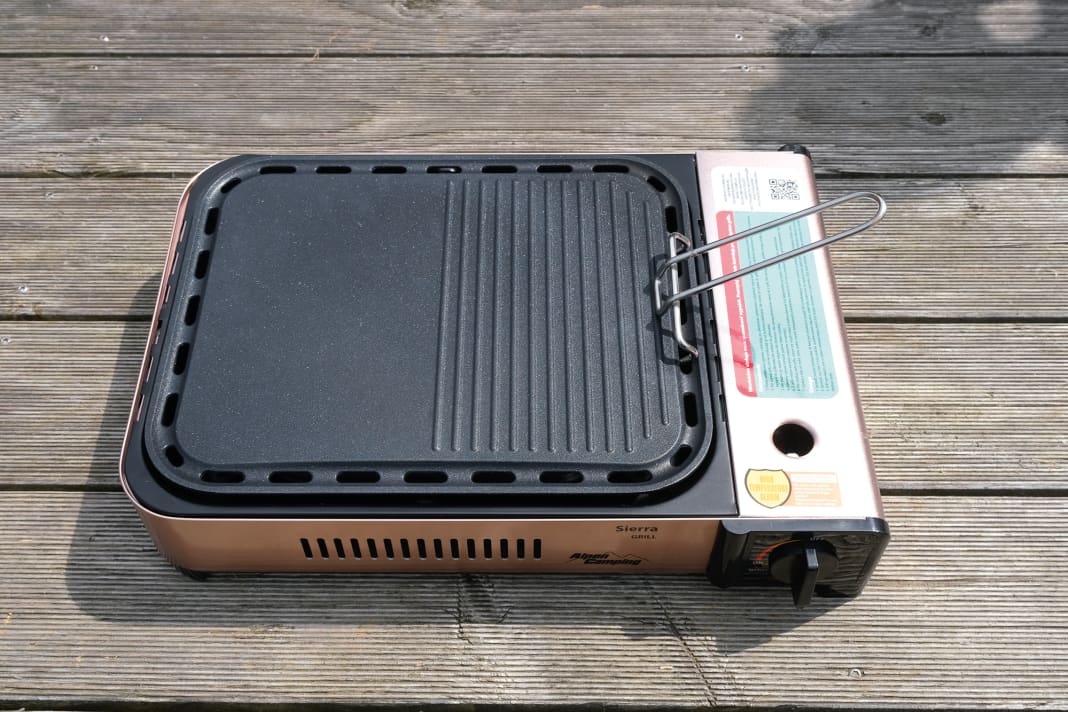



A mixture of butane and propane gas is used as the energy source for all models, although the standards of the cartridges differ. Four different connections are represented in the test field. The most frequently used canister is the one with the EN417 standard. Exceptions are the 2-in-1 gas cooker from Kaufland, which requires a CP250 Campingaz cartridge, and the Magma gas barbecue, which requires a CV470 cartridge from the same manufacturer. These cartridges can be found in the range of DIY stores, their volume ranges from 220 to 500 grams of liquid gas.
Cadac (approx. 200 €) >> available here
+ large grilling surface, + thermometer in the lid, + practical storage bag, - no gas connection included in the scope of delivery
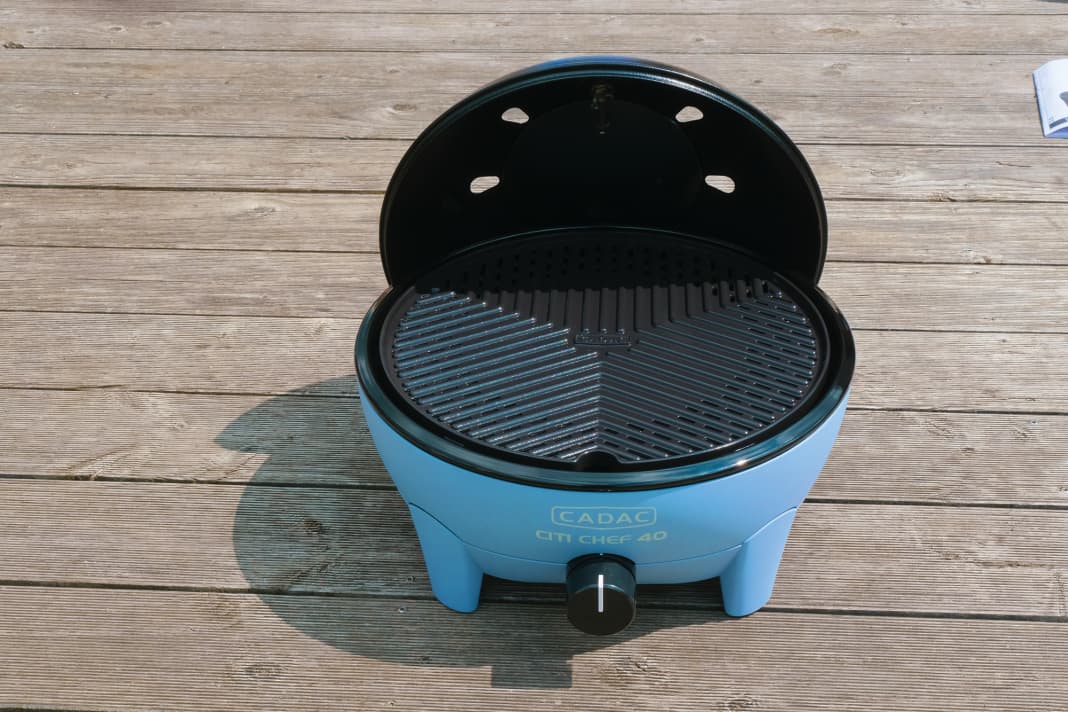



Gas from the bottle
The Citi Chef 40 from Cadac can be supplied with various connections, but no connection is included in the standard scope of delivery. The Urban Pro from Enders has a connection for a large refillable gas cylinder in accordance with DIN 51622.
All gas barbecues must be assembled at the start of the test. Much of the work, such as fitting the feet (Cadac, Enders, Cobb, Weber, Knister grill), is only carried out during the initial start-up. The 2 in 1 gas cooker only needs to be taken out of the case and is ready for use straight away. The most time-consuming part of the Skotti barbecue is putting it together. However, thanks to the illustrated instructions, this is also easy and works without much thought after the second time at the latest. On the other hand, the barbecue made of stainless steel sheets scores points with its sensationally small pack size, which earns it an additional five points. The assembly itself was deliberately not rated, as it works without any problems on all models. The pack size of the Nomadiq, Knister-Grill and Skotti models is reduced enormously. However, the necessary steps are easy to follow and do not require any additional effort.
CALOR (approx. 155 €)
+ hot, easy to adjust, + practical cutting board, - poorly balanced, - somewhat awkward to clean
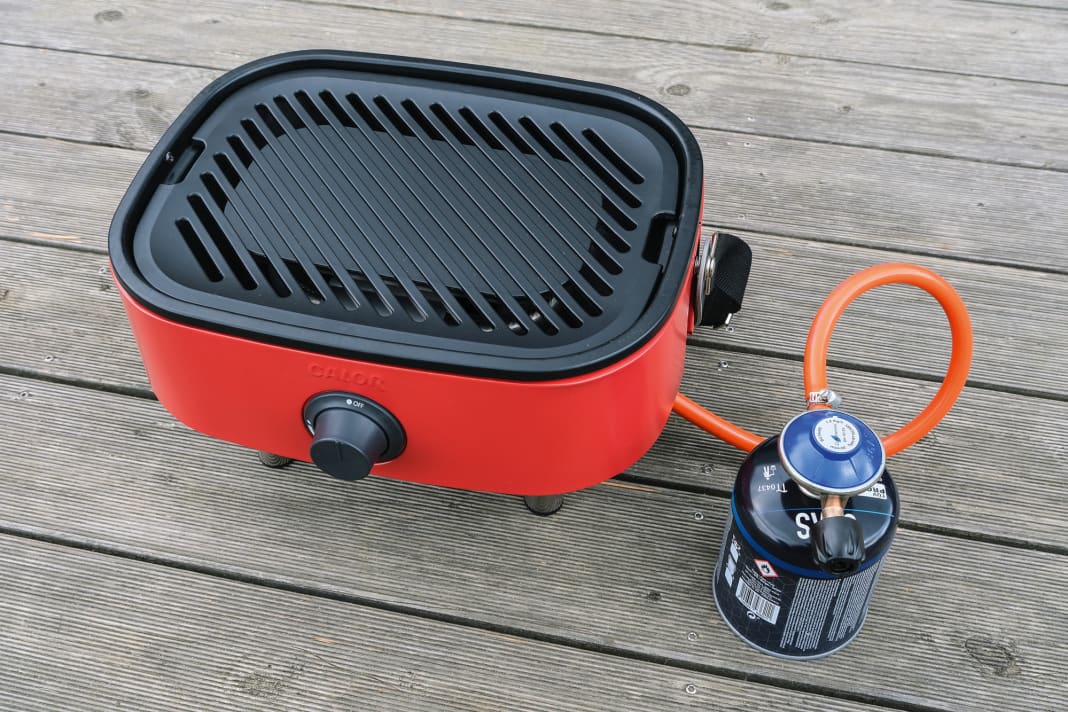



COBB (approx. 200 €) >> available here
+ very good control, + practical lid, + easy to clean, - heat distributed somewhat unevenly
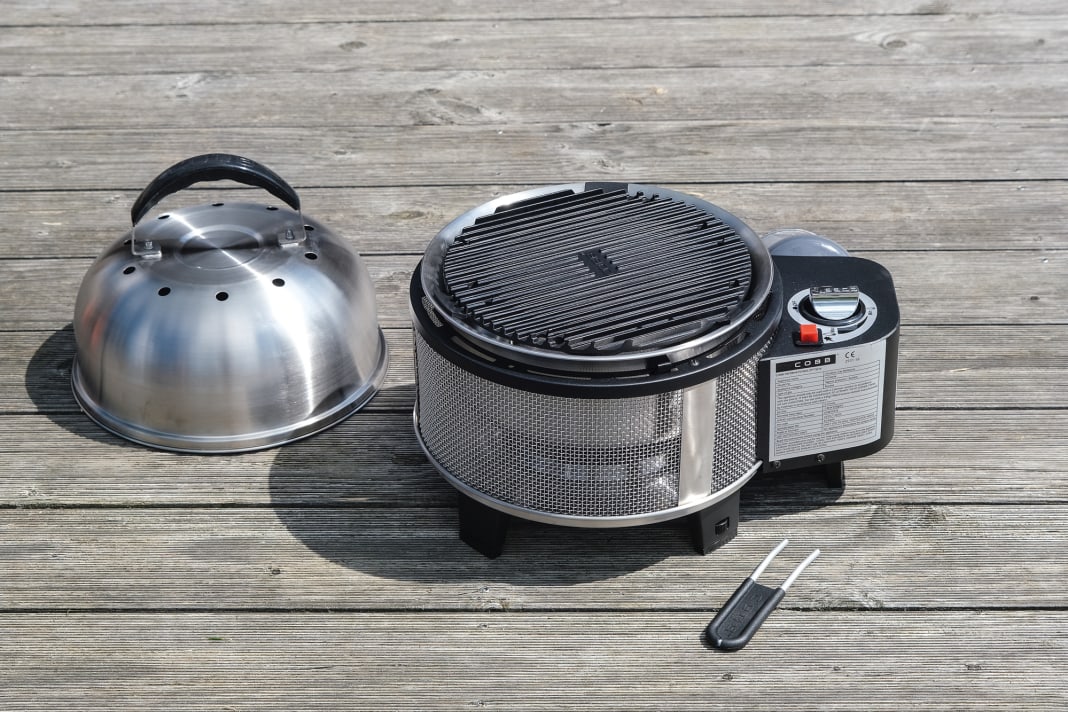



Another nice detail of the Skotti barbecue is the completely plastic-free packaging. The barbecue comes in a cardboard box, only the storage bag is made of PVC tarpaulin. However, it is part of the product. The Knister barbecue also manages with very little plastic film. With all the others, a large amount of film and polystyrene remains after unpacking.
Enders (approx. 180 €) >> available here
+ very large grill grate, + lid with thermometer, + practical side shelves, - heaviest model in the test
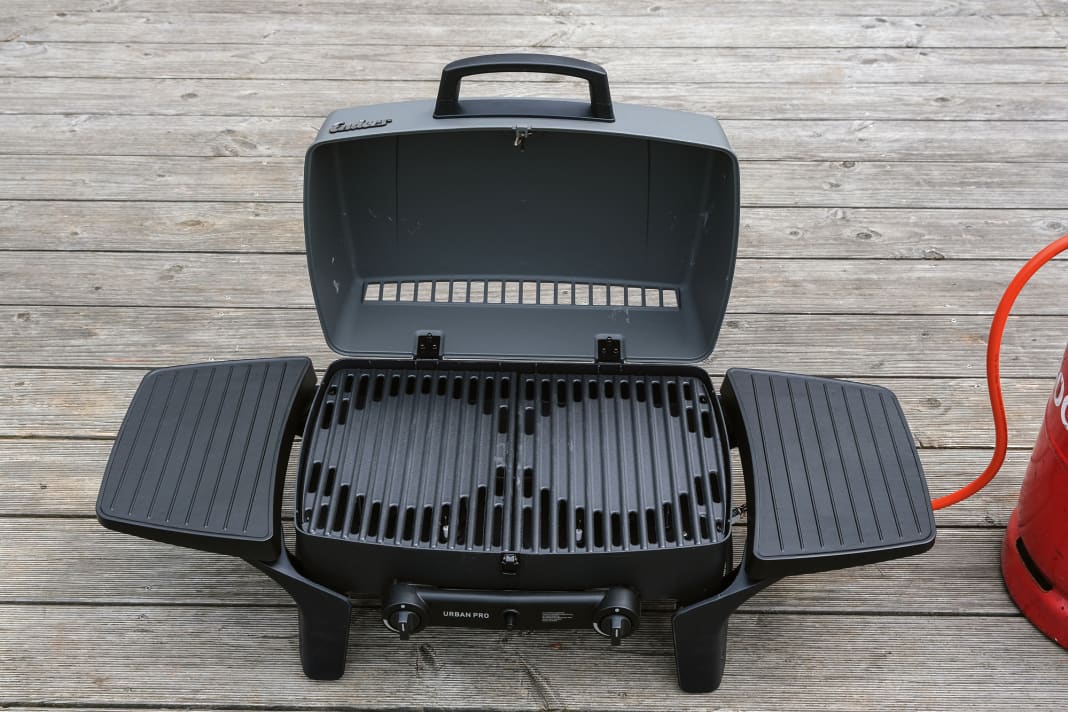



Fire and flame
The main points in the evaluation are control and heat distribution. The first point covers both the operation when lighting and the regulation of the flame and therefore the temperature. Here, for example, we had the problem with the Magma that it remained switched on when we wanted to switch it off. The control is not self-explanatory. The crackling grill simply didn't burn well: yellow flames kept flaring up hissing, and the grill only got hot when we pushed it down to half its size.
Knister (approx. 160 €)
+ space-saving design, + optional railing holder, + practical details, + problems with heat distribution
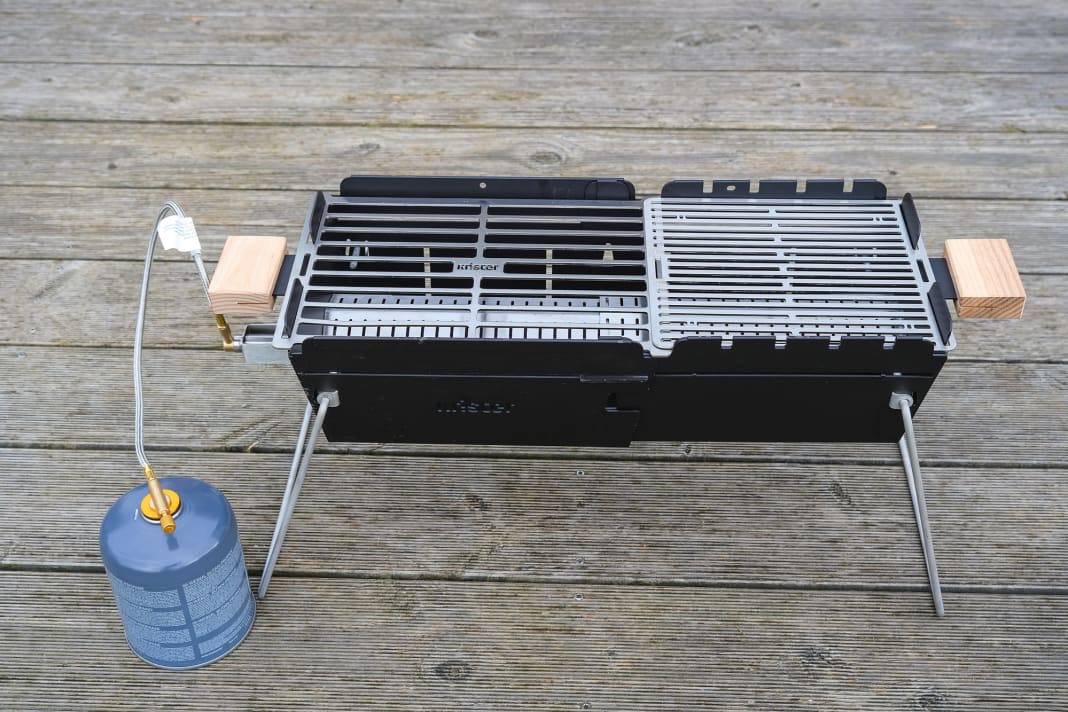



Magma (approx. 270 €) >> available here
+ practical rail holder, + well-integrated lid, - takes a long time to heat up, - awkward regulation
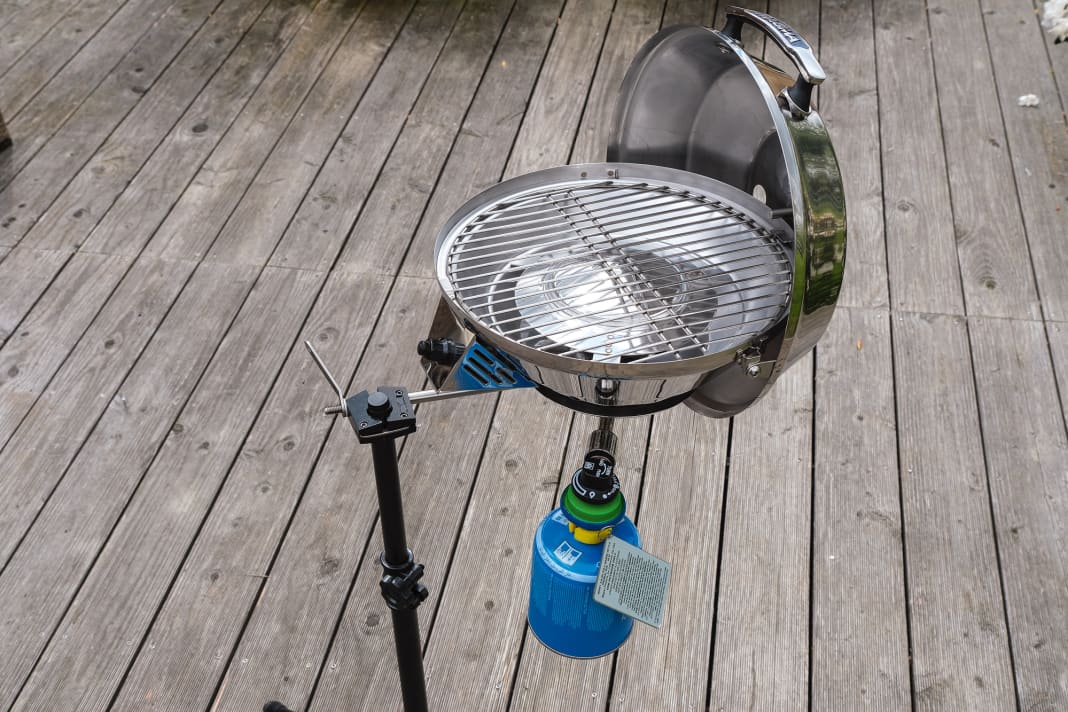



When evaluating the heat distribution, the focus was on whether the grill gets hot enough and whether the heat is as high as possible at all points on the grill. If this is not the case, the sausage in the centre of the grill will burn, while the sausage on the edge will not be cooked. We randomly checked this point with a thermal imaging camera attachment for the smartphone.
One advantage of gas over coal is the simple heat control - only possible with a coal barbecue by adjusting the height of the grill - and the fast heat-up time, which takes around one to three minutes.
Nomadiq (approx. 250 €) >> available here
+ large grilling surface, + good packing size, + simple control, - complicated to clean




Open fire!
The gas consumption could be determined by weighing the cartridges before and after grilling. However, the values are difficult to compare as the barbecues are different sizes and the temperature was also regulated individually. Consumption is between 40 and 162 grams of gas per barbecue insert. Depending on the cartridge, this can be used to prepare food between two and five times. To barbecue once, you therefore have to reckon with gas costs of around two to five euros.
Almost all of the gas barbecues in the test worked very well. The Urban Pro and the Nomadiq BBQ are particularly recommended for large crews due to the large surface area on the grill. The latter can also be stowed away to save space. The models with a lid are also suitable for preparing elaborate dishes or vegetables and offer better wind protection. A lid is available as an option for the Skotti.
Skotti (approx. 160 €) >> available here
+ good heat distribution, + simple control, + very compactly packed, + bag can also be used as a base
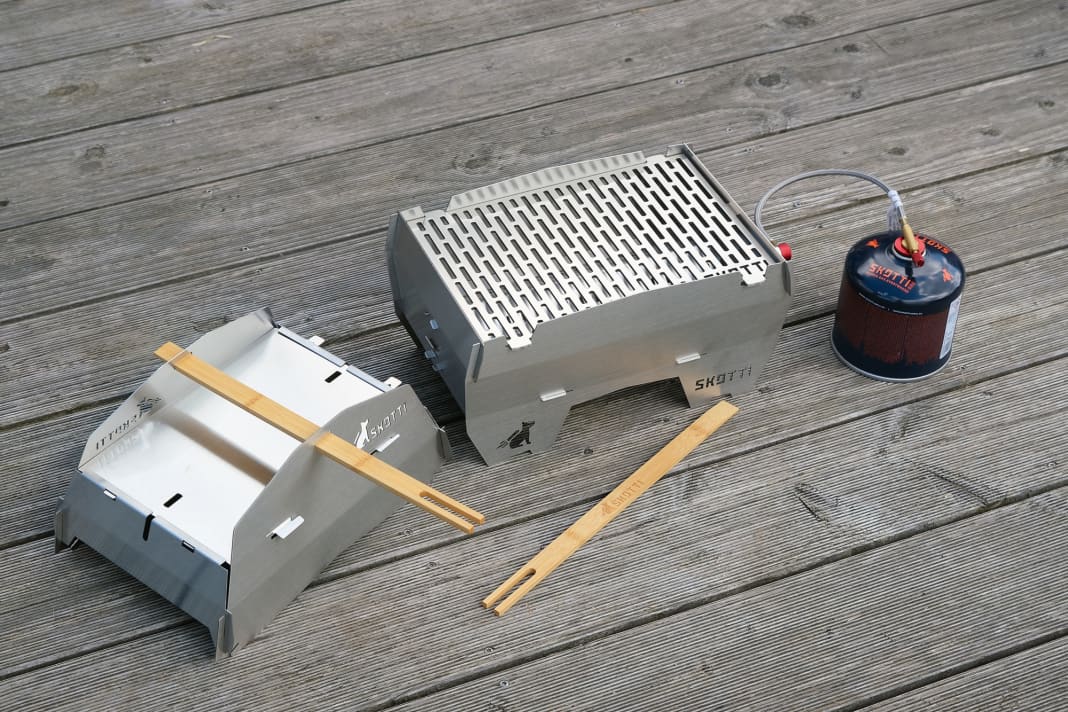



Weber (175,49 €) >> available here
+ large grid, + packed, feet lock the lid, + good heat distribution, - stands a little wobbly
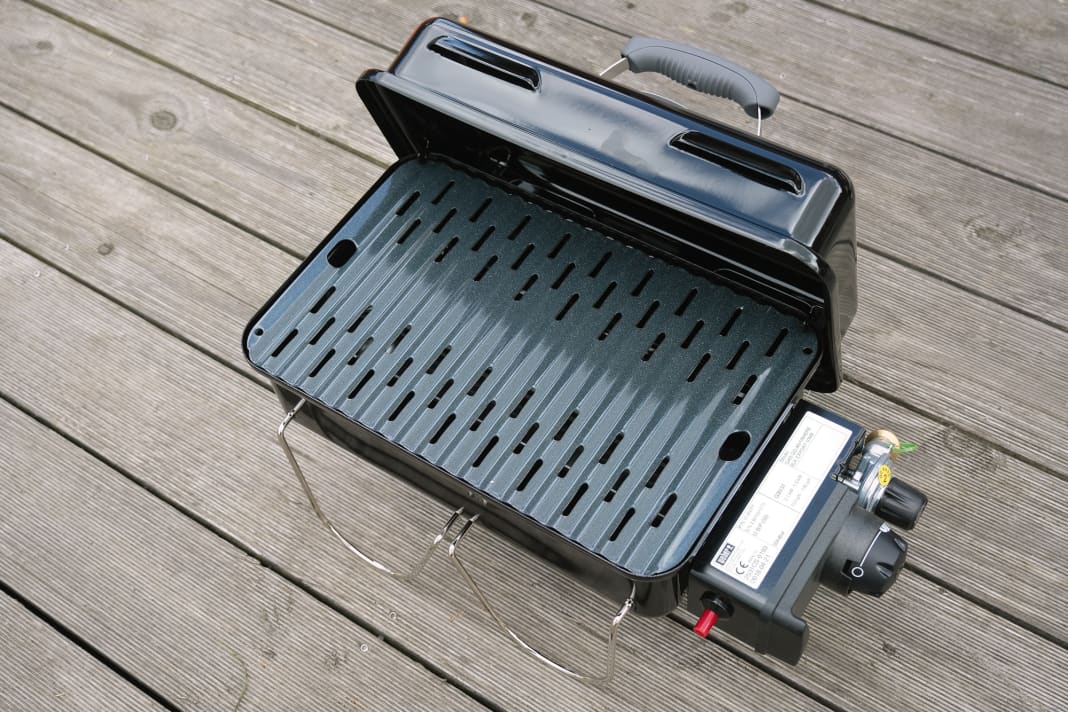



The gas barbecues tested are all quite expensive - with the exception of the 2-in-1 barbecue from Kaufland: with very good functionality and a price tag of 90 euros, this is our value-for-money winner and therefore equal on points with the test winner from Skotti. With its ingenious plug-in system, it doesn't take up any space in the baking box and can be stored in the cupboard under the plates.
Additional equipment
These barbecue gadgets bring more variety to the grill:
- Fish roaster >> available here
- Stainless steel skewers >> available here
- Pizza stone >> available here
- Barbecue thermometer >> available here
- Waffle iron >> available here
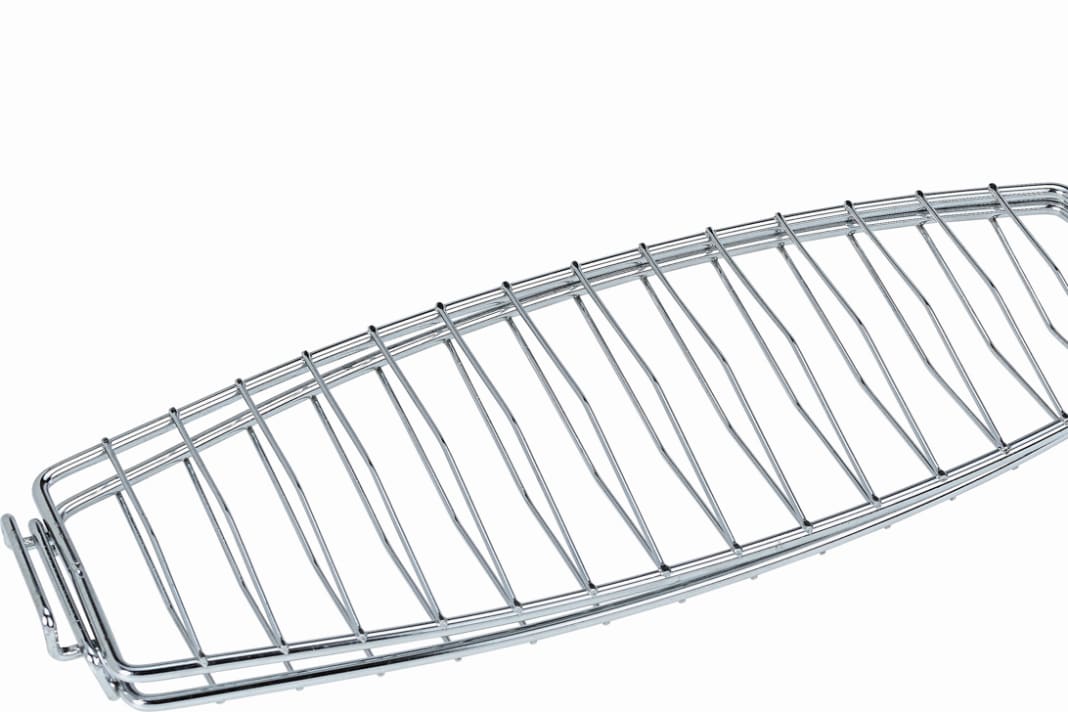





The test results
